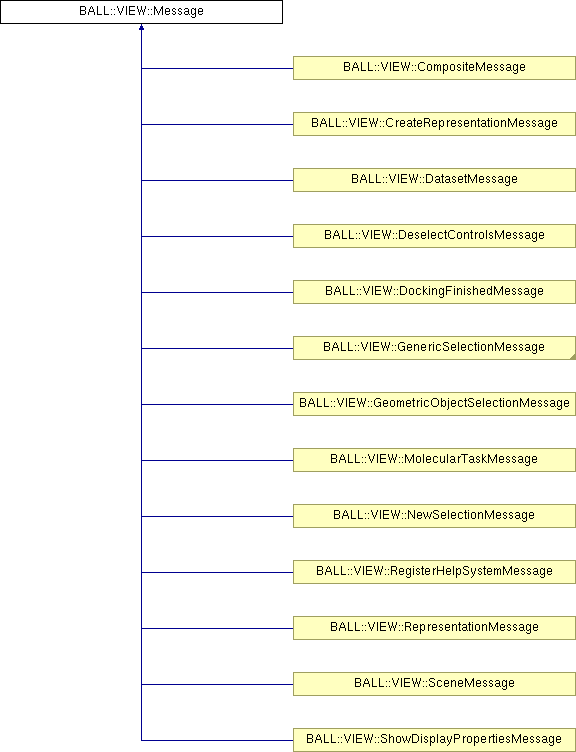VIEW::Message Class Reference
[Messages]
General Message class.
More...
#include <message.h>
Inheritance diagram for VIEW::Message:

Public Member Functions | |
Constructors and Destructor | |
| Message () throw () | |
| Default Constructor. | |
| Message (const Message &message) throw () | |
| Copy constructor. | |
| virtual | ~Message () throw () |
| Destructor. | |
Accessors: inspectors and mutators | |
| void | setSender (const ConnectionObject *sender) throw () |
| Change the sender. | |
| const ConnectionObject * | getSender () const throw () |
| Non-mutable inspection of the sender. | |
| void | setDeletable (bool flag=true) throw () |
| Change the deletable flag. | |
| bool | isDeletable () const throw () |
| Test if this message is deletable. | |
Detailed Description
General Message class.Message is the base class of all message classes and provides a base interface. Message classes will be sent through the ConnectionObject tree for the purpose of communication between several ConnectionObject classes. Each ConnectionObject handels in its onNotify() method messages that are relevant for that class by means of RTTI. This class can be given a sender object that is a pointer to the ConnectionObject that has initially sent the message. This methods concerning the sender object are internally used and no user interaction is necessary. A message can be deletable or not. If a message is deletable it will be deleted after all ConnectionObject objects has been informed of this message. Therefore a deletable message must be created with the new command. All messages should be created with the new command, since they will be automatically deleted after all ConnectionObjects have been notified. See ConnectionObject for further information concerning message handling. and message posting.
Constructor & Destructor Documentation
|
|
Default Constructor. The state of this message is:
|
|
|
Copy constructor.
|
|
|
Destructor.
|
Member Function Documentation
|
|
Non-mutable inspection of the sender. This method will be used internally by ConnectionObject::onNotify.
|
|
|
Test if this message is deletable.
|
|
|
Change the deletable flag.
If the parameter flag is set to
|
|
|
Change the sender. This method will be used internally by ConnectionObject::notify_.
|